It was still dark when I woke, and all of Calvert Island and the anchorage it surrounded were eerily still. I shifted my weight and GAMINE moved with me. We were still afloat. Above the gunwales, the faint light of early dawn had just separated the sky from the silhouettes of the forested hills. I drifted in and out of sleep for another hour and when I sat up, beads of dew trickled off my bivi bag. With RAINBOW gone (read about RAINBOW in Part I), I was alone in Pruth Bay, a cruciform inlet with three half-mile-long coves at the head of its entrance to the east. I was cold and rowing would be the quickest way to warm myself, so I prepared to get underway before breakfast. As I reeled the anchor in, the rattle of the chain against the gunwale echoed across the bay.
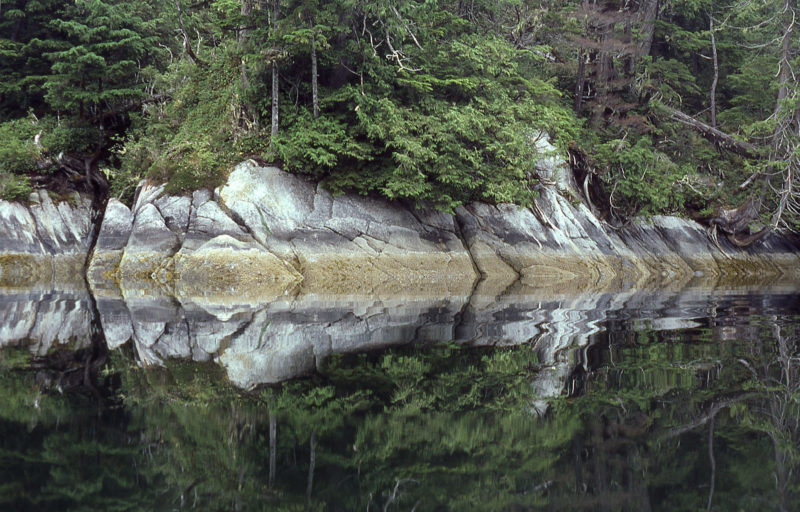 Photographs by the author
Photographs by the authorWard Channel was quite still and GAMINE’s wake was the only thing disturbing the water. I couldn’t bring myself to row fast any more than I’d break into a run in a cathedral.
The 4-mile row to the north end of Calvert Island brought me to Hakai Pass, its waters rising and falling with the ocean swell as gently as the chest of someone still asleep. I made the crossing in about an hour and entered Ward Channel, a 1-1/2-mile-long alley just a few hundred yards wide. The swell diminished and the black water along the shore mirrored the band of gray rock beneath the trees; the closer to shore I rowed, the harder it was to distinguish the presence of water from emptiness. A raven flew by dozens of yards away; I could hear the faint crinoline rustle of its feathers.
I entered Fitz Hugh Sound where it was about 5 miles across to the mainland shore, and felt the beginnings of a southerly breeze. It filled in, pleating the water a darker blue, and I raised the mast and set sail in the first following wind I’d had in two weeks. I was making fair progress with the main and jib set, but I thought I could do better by raising the light nylon boom tent as a spinnaker. I had threaded the end of a halyard through the webbing loops on one end of the tarp when I heard the hollow rush of a whale’s exhalation.
Forty feet to port, a long, low streak of black broke the water’s surface. A low knuckled fin, traveling the length of the streak before submerging, identified the whale as a humpback. I pulled the tarp aloft and it bellied forward opposite the main. The wind continued to freshen and GAMINE churned northward, making quick work of Fitz Hugh.
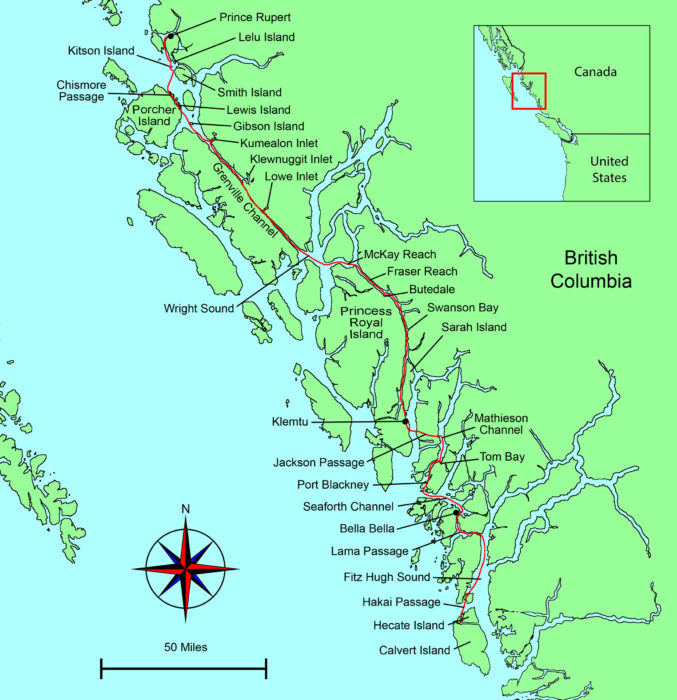 Roger Siebert
Roger Siebert.
I turned west into Lama Passage. There the wind was against me, but I felt strong even rowing 5 miles against the chop to Canal Bight, a twin-lobed cove on the north side of the pass. I’d covered more than 33 miles since leaving Calvert, but I’d sailed most of the way and had had a long break from rowing with my stay at Port Hardy and sailing with RAINBOW. I put GAMINE ashore to cook dinner and thought I’d spend the night at anchor, but the bight was not protected from southerlies. There were two nooks tucked around corners that would be safe if the wind came up during the night, but both would dry out with the early- morning low tide. The air was still and to the west the warming amber tones of sunset silhouetted the lacy fringe of tree line that surrounded me.
It was almost 9 p.m., but only 5 miles lay between me and Bella Bella. The tide would carry me northward and the gibbous moon, gleaming in the indigo sky to the east, would light the way. I rowed around Twilight Point, appropriately, at twilight and as I turned north the moon’s reflection splintered in the ripples of my wake. A seiner, southbound, slowed and came alongside; the skipper, having seen my light, asked if I was okay. I replied, “Yes, thanks, I’m doing great.”
When I reached Bella Bella, I tied up at the end of one of the two docks, hiding beneath the ramp to the pier a dozen feet above. I thought I’d be safe there, tucked out of the way, but after I had rearranged the boat for sleeping, a group of teenagers, judging by the sound of their voices, tromped down the ramp. Two of the boys among them were there to have a fight; the rest came to watch. All the shouting and goading was making me a bit anxious, so I quietly packed up, slipped my lines, and rowed away through the pilings beneath the pier.
A few dozen yards to the south, I found a mooring buoy and gambled that the owner wouldn’t be needing it that night. Dew was beading up on the boat and my gear, but I warmed up as soon as I was in my sleeping bag. The fights on the dock were still going on and I heard another similar commotion to the north. Around midnight the waterfront lapsed into silence and I was able to sleep until 4 a.m., when there was yelling and swearing again coming from the pier.
At daybreak, Bella Bella was at peace as a man in a red-and-black plaid coat rowed a diminutive plastic dinghy out to one of the fishing boats moored near GAMINE. I said good morning and introduced myself; he returned the greeting, identified himself as Kelvin, and invited me to come ashore for a cup of coffee. He rowed over to pick me up, but when I stepped aboard the dinghy, which was full of holes, it started filling with water. I tied a long line to it so he could go ashore first and I could pull the dinghy back out for my turn.
Kelvin’s house, built on slender stilts over the intertidal, was a short walk along a weathered boardwalk with several planks missing. His living room was well kept, with shag carpet and dark paneled walls, decorated with only a framed photograph of a young girl—his daughter—and a painting of Jesus. As we sat at the kitchen table with a plate of homemade bread his wife had made that morning, the washing machine, running just outside of the kitchen, went into a spin cycle and the whole house shook as if an earthquake had rumbled under Bella Bella.
The southerly that had helped me get to Bella Bella brought clouds, and when I left it began to rain. I sailed under the boom-tent spinnaker to Seaforth Channel. Visibility in the rain and mist was poor, but I was always able to steer clear of fishing boats and cruise ships and make out the landfalls along the north side of the channel. GAMINE was moving well, but sitting in the stern, inactive, I was getting chilled. My nylon rain jacket was saturated with rainwater and pressed heavily against my back and shoulders. The cold seeped through, at first numbing my hands and arms, then making me shudder. I lowered the rig, set the oars between the tholes, and began to row, waiting for the exertion to warm me.
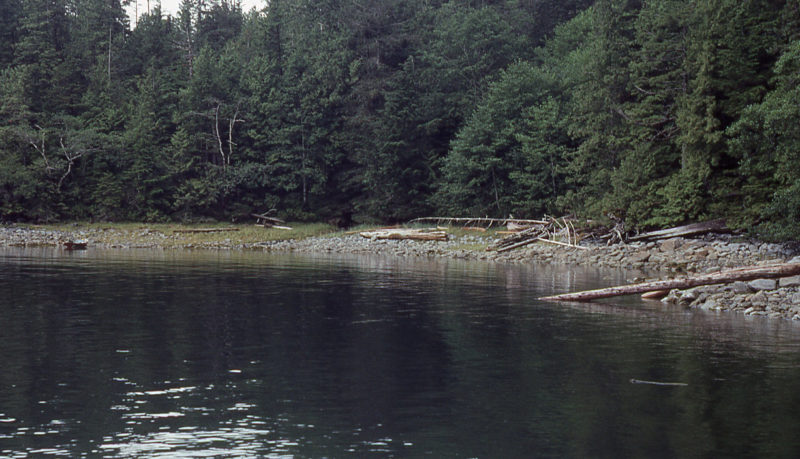
Port Blackney wasn’t the refuge I’d expected it would be. GAMINE is tethered at the far left and somewhere behind the thick wall of trees there is an old log cabin being consumed by the rainforest.
After 3 miles under oars I turned north-northeast into Reid Passage, a 170-yard-wide channel separating Cecilia Island from the mainland peninsula it parallels. At the north end of the passage was a place marked on my charts as Port Blackney. I expected to find a harbor of some sort where I take shelter and warm up. What I found there, nearly invisible in the dark woods along the south side of the cove, was a one-room cabin, its log walls cinder-black with decay and its roof swaybacked under a thick layer of moss and duff fallen from the cedar trees that loomed over it.
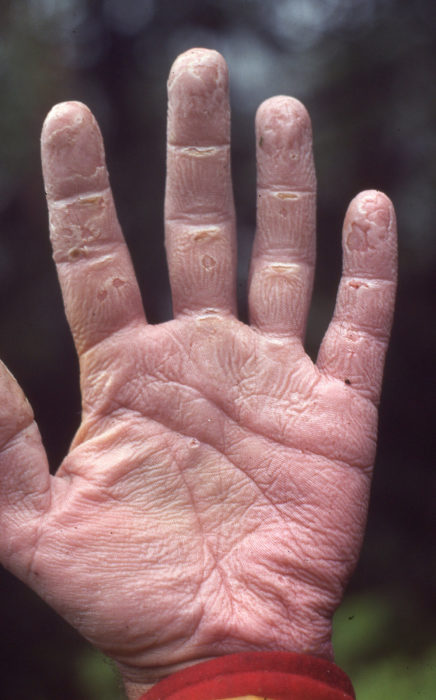
My hands showed the effects of spending 10 hours in the rain. My sense of touch was quite dulled, and in the evening I had to dry the skin over my camp stove before I could use my hands less clumsily.
Worried that the cabin might yet appeal to bears or wolves, I resumed rowing along the mainland shore and made my way to Mathieson Channel. I had covered about 25 nautical miles when I pulled into Tom Bay to anchor for the night. It had been raining the entire time I’d been underway, and my hands had been wet for 10 hours. My palms were as rough and almost as white as raw cauliflower. Every fingerprint ridge was in high relief, and where rowing had peeled away a layer of skin there were craters surrounded by ragged edges. I could scarcely feel anything with my fingers, and I fumbled with the tarp, getting it stretched over the cockpit. Before I cooked dinner, I held my hands above the stove until the heat rising from its blue flame brought them back to normal.
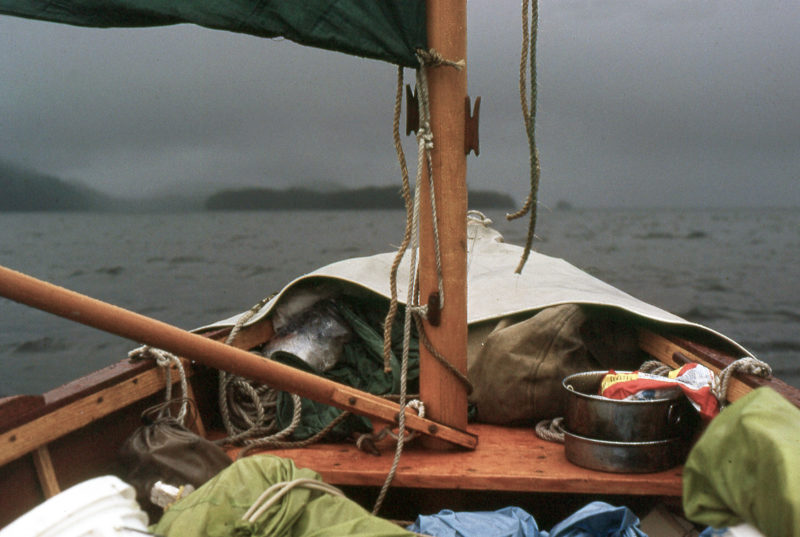
The ride up Mathieson Channel went quickly with a benevolent tailwind, though the rain and gloom were dragging me down.
In the morning I woke well before sunrise as the first light was sifting through the fog and drizzle. I was under way at 5 a.m., dreading another day of being cold and wet, but again needing to get moving to warm up. There was a good following wind in Mathieson Channel, strong enough that I set only the mainsail to drive GAMINE north the 7 miles to Jackson Passage. Flanked by 1,000’-high ridges, the nearly 6-mile-long east–west passage spans not quite a half mile in a few places, but most of it is just a few hundred yards wide.

After I’d been rained on for the best part of two days, the mist began to lift over Jackson Passage. During the trip, I took very few photos of myself from a distance. The camera’s self timer gave me only 10 seconds to get into the frame and running across seaweed-covered rocks in this little cove off the passage was flirting with injuries I could ill afford.
There was no wind in the steep-sided landscape, so I brailed the main and rowed. Cedar trees, growing thick just above the water, had their lowest boughs evenly trimmed by the tides, like an orchard grazed by deer. The rain had stopped, and the water was dark and as smooth as oil. While the sky was still overcast, far to the west, beyond the end of the passage, the sun had reached through an unseen gap in the ceiling, setting the overlapping ridges of Swindle Island aglow and dappling them with the shadows of clouds.
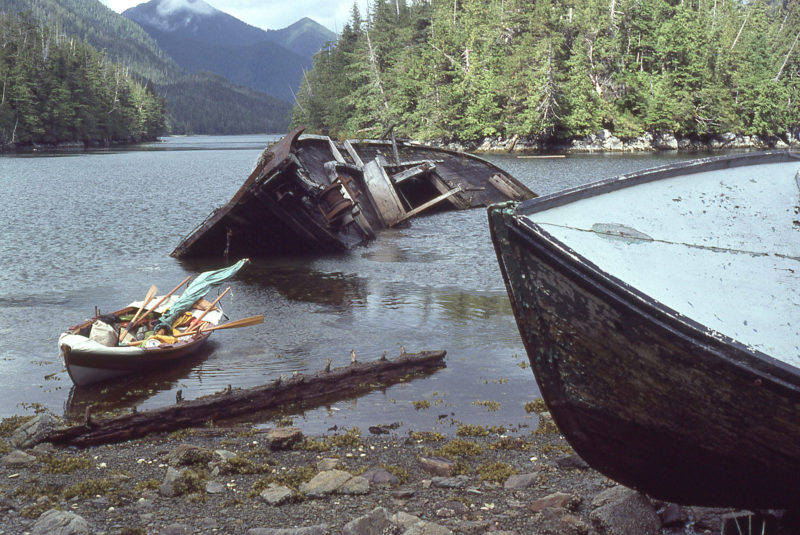
When I entered the channel that led to the village of Klemtu, I found a cove that seemed to be where fishing boats past their usefulness were left to die.
When I emerged from Jackson Passage there was a westerly on Finlayson Channel, so I dropped the bundled mast, mainsail, and sprit and began rowing across to Swindle. In mid-channel I passed a blue plastic tarp floating at the water’s surface. Thinking it would help me get through another spell of rain more comfortably, I fished it out of the water and tucked it away.
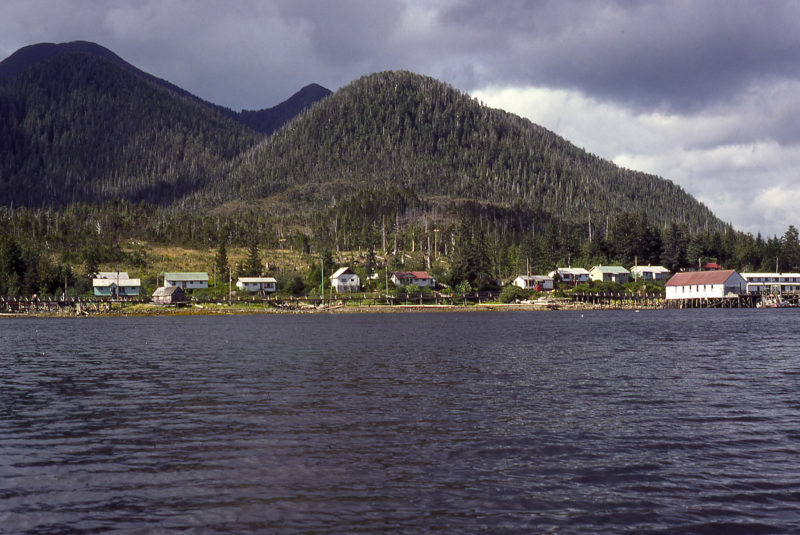
Klemtu was a small native village, home to about 200 people and accessible only by boat. Running in front of the houses at left and toward the white building at right is an elevated boardwalk that served as the main street.
Klemtu was a small village with a single row of white clapboard houses arrayed along the curve of the shoreline, and a boardwalk set on pilings over the intertidal zone and serving as the village’s main arterial. I stopped long enough to buy some apples and cookies at the grocery store, and was underway again at 3 p.m.
In the late afternoon a northwesterly arose briefly, staying only long enough to sweep the dull gray overcast. With the sky cleared and the air stilled, I kept rowing well into the evening. The moon rose above Sarah Island and lit my way along Tolmie Channel to a narrow inlet on Princess Royal Island. About 200 yards in, I stopped rowing and GAMINE slowly drifted backwards in what had to be the outward-flowing current of a river. I could hear fish jumping and guessed that salmon were heading to the river to spawn.
It had been a very long day—I’d covered 33 nautical miles since leaving Tom Bay—and I needed a good night’s sleep, but when I settled into my sleeping bag it was still wet from the rain two days ago. It took a long time to get warm, and I kept worrying that GAMINE would drag anchor and drift into the traffic in Tolmie Channel. The repeated knocks of salmon running into GAMINE’s hull made it that much harder to get to sleep.
I did nod off eventually and slept so soundly that I missed my alarm in the morning. When I woke I could still hear the salmon on the move, but instead of splashing, they were making a swishing sound like an oar blade pulled only half submerged. Then a sharp rap of wood against rock shook the boat. I bolted upright and saw the water was only inches deep; the salmon barely had enough to cover their backs. I was surrounded by fins. I got dressed quickly in the chilly morning air, hauled the anchor aboard, and let GAMINE drift into deeper water.
I’d rowed only about 4 miles to the north when several packs of 10 to 15 southbound commercial trollers rushed by, pushing piles of white foam at their bows. I took some wakes bow-on and rowed through them, but others were so high and steep that I had to lunge for the stern sheets to raise the bow enough to keep from spearing through them.
I stopped to stretch my legs at Swanson Bay on the mainland side of Graham Reach. There had been a pulp mill there, built around 1900. All that was left were a towering square brick chimney and the ruins of two concrete buildings, one with a pair of squirrel-cage fans 8’ in diameter at the base of rusted metal bars five stories high.
Marked on my chart was the point where the tides meet behind Princess Royal Island, and I rowed toward it from Swanson with the last of the flood, anticipating the ebb would carry me the remaining 10 miles to Butedale. But a northwesterly wind had given the flood tide flowing in from the north end of the island enough momentum to continue flowing south during the ebb. With wind and current against me, I had a long hard pull to get to Butedale.
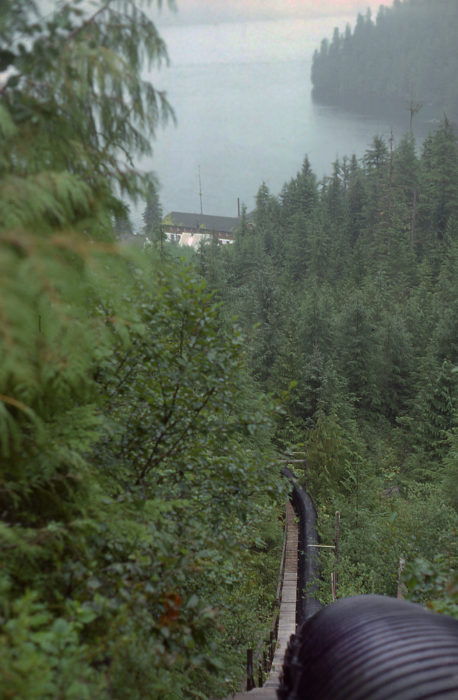
I hiked to Butedale Lake on the steep boardwalk built alongside the wooden pipe supplying water to the generator that provides electricity to all of the buildings. A wrapping of wire kept the tarred staves from bursting under the pressure.
Tucked in a 1/3-mile-wide cove and built up against the steep slope of Princess Royal Island, Butedale was built as a cannery and was in operation for three decades before being shut down in ’50s. When I arrived, almost all of the buildings for fish processing and the residences for the workers were empty, but the general store, a two-story white clapboard building at the top of the ramp angling up from the dock, was still open for business. Dan, the man running the store, was a Seattlite like me, and he had just bought Butedale, all 72 acres along with the houses, the dining hall, a bunkhouse, the fish-packing buildings, and the hydroelectric plant. I bought an ice cream sandwich from him, and he invited me to spend the night in the bunkhouse.
I brought my gear up from GAMINE, took a long, hot shower in the bunkhouse, and made myself at home in the dining hall. I was the only one in the building, but the steam radiators were keeping it warm and the air was redolent with the aromas of old wood, paint, and linoleum. I didn’t need to use my camp stove for cooking, as I had a working institutional kitchen at my disposal.
I woke in the bunkhouse clean, dry, and well rested. A southeaster had moved in during the night, bringing rain. I was in no hurry to leave and the tide wouldn’t be in my favor until midday, so I took a walk around the village. Lights were on everywhere, even in the unoccupied worker houses. The turbine driving the electrical generator was always spinning, driven by water from Butedale Lake descending through a tarred wood-and-wire pipe 3′ in diameter. To keep the turbine at a safe rate there had to be a constant load on the generator from the electrical grid.
At noon, I left Butedale and rowed into a confusion of chop as two sets of waves were met at right angles to each other and bounced off the shore’s near-vertical slabs of bare rock. In Fraser Reach, a 12-mile-long furrow between ridges on either side rising from the water in uninterrupted slopes as high as 4,000 feet, the wind picked up, so I set the main and jib. GAMINE took off down the channel. Rain was seeping through leaks in my foulweather gear, so I wrapped myself in the blue tarp that I’d picked up in Finlayson Channel.
As I was settling in on the stern sheets, an errant gust slipped in behind the main. I ducked under the boom as it slammed across, but the sheet snapped tight across the back of my neck and pinned me on the now leeward side. Wrapped in the slippery wet tarp, I couldn’t get much traction and had to scramble to get my weight to windward. I managed to get to the high side before any water could come pouring over the rail; when I got GAMINE settled on the new tack, she made great speed, and the white-veil waterfalls draped over the steep flanks of Princess Royal Island raced by.
I rounded Kingcome Point at the intersection of Fraser Reach and McKay Reach and coasted into the island’s lee. A 1-mile row brought me into a cove that would be protected as long as the wind didn’t swing around to the north. It was only 5:30 p.m. and I had covered just 15 miles, a short day. The fog had lifted, the water was silky-smooth for as far as I could see, and although I had fallen into the habit of making miles whenever I could, the next safe haven was a long way off. A mooring buoy in the cove would simplify settling in for the night and set aside my anxiety about dragging anchor, so I settled in my nest on the floorboards dry, warm, and happy.
In the wee hours of the morning, I was awakened by a dull thud that shook the boat. A drifting log had struck GAMINE and stuck, balanced across her stem. It took several hard pushes with an oar to slip it free.
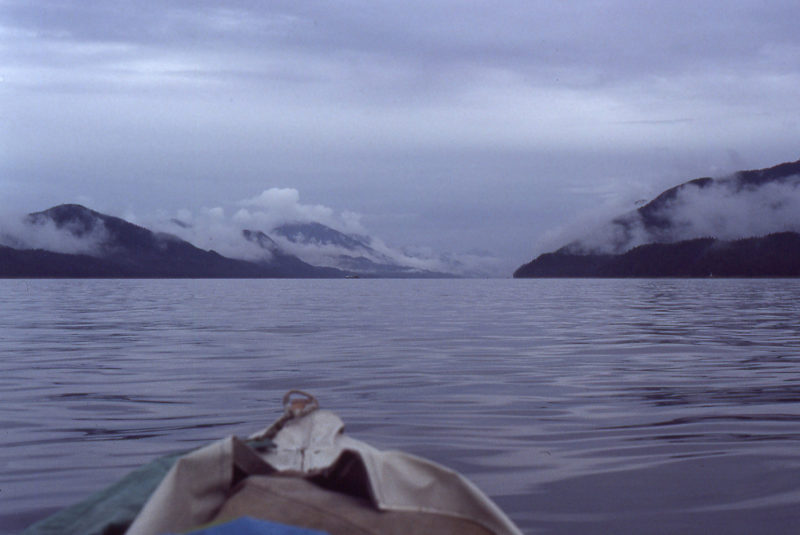
The gap in the hills ahead is the entrance to Grenville Channel, a 45-mile-long corridor that funnels winds and tides.
I got up at 4:30 and was under way at 5:00 under clear skies and on calm seas. I rowed with the tides in my favor and made good speed covering the 20 miles from McKay Reach and across Wright Sound. Two miles into Grenville Channel, a 45-mile-long ice-age-plowed trench between Pitt Island and the mainland, I was feeling fatigued and pulled into a narrow notch in the north shore to wait out the worst of the ebb; it would reach speeds upwards of 5 knots and make progress impossible. It didn’t take long for gnats to find me at anchor. I wrapped some netting around my head, pulled my bivi bag over the rest of me, wrote an early journal entry, and eventually lay down for a nap.
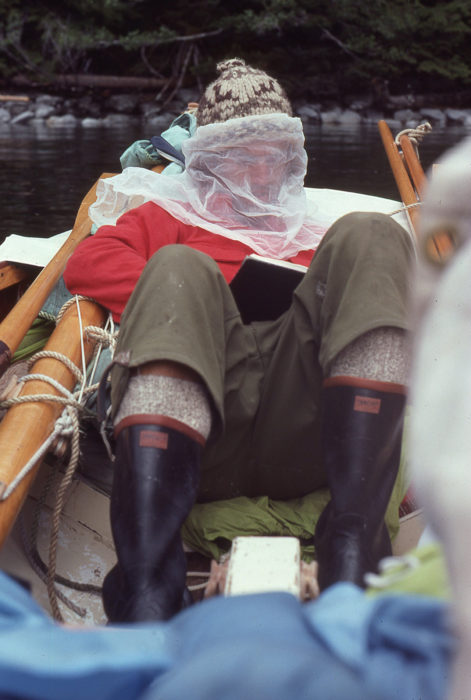
Waiting out an adverse tide on Grenville Channel, I had to wrap up in a piece of netting to keep the bugs off my face while I wrote in my journal. In cool weather I dressed in wool: heavy socks, Army surplus pants that I had turned into knickers for backpacking, a long-sleeved shirt, and a Cowichan knit hat that I’d found half buried in the intertidal sand on a Puget Sound beach.
When I woke an hour or two later, the backs of my hands were dotted with pinhead beads of blood and GAMINE was crowned with erratically circling gnats. I rowed out of the inlet as fast as I could, swinging at the bugs tucked into my slipstream. It took a mile of hard rowing to leave them all behind.
I’d been getting used to the fatigue—rowing was just what I did every day, often all day—and my hands had toughened up, but my mind was feeling the wear and worry of the travel, especially in the long channels where anchorages were scarce and adverse currents and winds were a daily struggle. September was just a few days away, and the crests of the ridges and peaks that surround the Inside Passage were now being dusted with snow. In another week I could cross the U.S. border, but as appealing as it might have been to say I had rowed to Alaska, as a goal, it had become meaningless. The scope of my concern was much narrower and more practical. Keeping warm and getting safely from one anchorage to the next were the only things that mattered.

Nettle Basin, in the farthest reach of Lowe Inlet, is quite remote but I found lots of good company there. The couple cruising with the St. Pierre dory (left) was quite generous. They brought me aboard for breakfast and before they left they gave me three big Dungeness crabs they’d caught.
I rowed another dozen miles along Grenville, and in the mid-afternoon I entered Lowe Inlet, a 1/4-mile-wide gap in the 2,000′ ridge on the north side of the channel. Two miles into Lowe, I came to Nettle Basin, where a waterfall tumbled out of a valley in the farthest reach of the inlet. The top of Verney Falls was nearly level with the band of blackened rocks that separated the forest from the intertidal, and, with a spring high tide, the falls would be no more than tongue of dark jade water slipping quietly into the inlet.
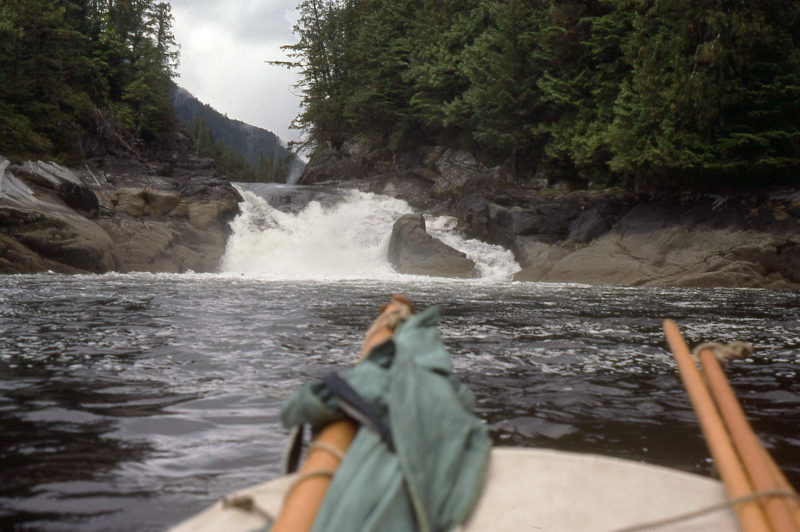
The tide was rising when I arrived at Lowe Inlet and salmon were gathering in Nettle Basin, waiting for the peak of the tide before attempting to swim up the waterfall.
I beached the boat, carefully picked my way across the rock slope, and sat down at the edge of the falls. I had seen salmon surfacing at the base of the falls when I had approached with GAMINE, and suddenly dozens of them were darting out of the water in low arcs above the rush of whitewater, flexing their tails rapidly even though airborne. They had been waiting for the peak of the tide to help them get past the falls to their spawning grounds farther inland. Some of the salmon, attacking the falls on my side, flew by inches from my boots.
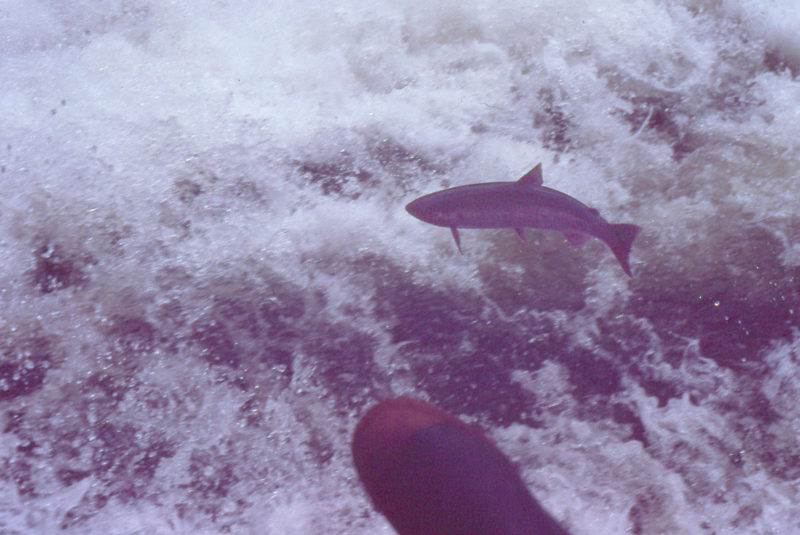
I sat watching salmon at Verney Falls for the best part of an hour. As I was doing research for this article, I found a photograph of the waterfall showing a black bear waiting to catch a fish at the very spot where I had been sitting with my back to the woods.
Nettle Basin was a popular anchorage for working vessels and pleasure craft. GAMINE, by far the smallest boat there, drew a lot of interest and generosity. A couple aboard a St. Pierre dory gave me two slabs of salmon that I cooked for dinner; the skipper of the tug LADY JODY let me spend the night in the fo’c’s’le. In the morning I was invited aboard the dory for breakfast and given three Dungeness crabs. A woman aboard a motor cruiser handed me some cookies and a banana, and a family of nine Tsimshian First Nations people invited me to join them for a beach picnic of spareribs and crab cooked over a campfire.
That second night in Nettle Basin was quite still, and rather than get ready to sleep, I started rowing out of the inlet, planning to take advantage of the nighttime tides in Grenville Channel. I rowed about a mile and had misgivings about spending the night underway; I and turned around and spent the night at the anchorage.
When I woke the next morning, black flies had found me. They were as big as raisins and their bites were quite painful. I had to wait until noon for the tides, so I pulled the bivi bag over my head while I had breakfast in bed.
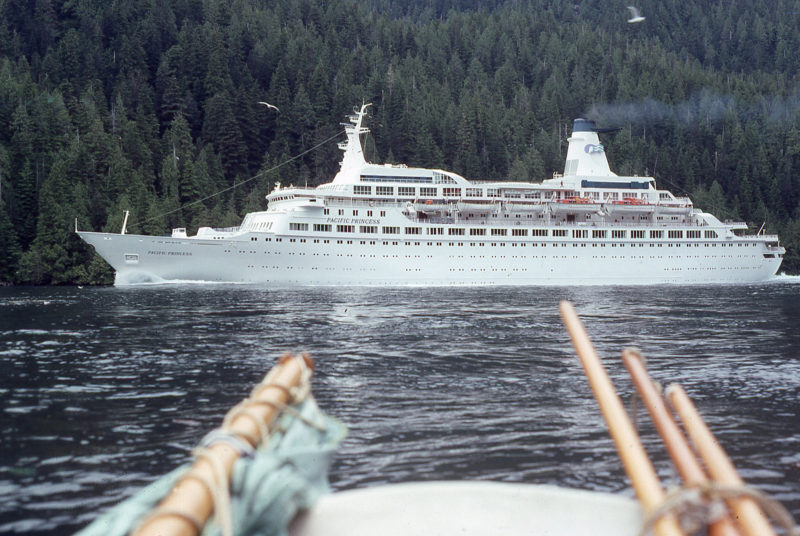
I shared Grenville Channel with yachts, fishing boats, and cruise ships such as PACIFIC PRINCESS, featured in the TV series “The Love Boat.” After stardom, she got caught up in a drug smuggling ring in the Mediterranean and was ultimately scrapped in 2014.
I reentered Grenville Channel and rode the ebb tide, sailing wing-on-wing in a moderate wind. For hours I sat on one of my 5-gallon paint buckets with one hand on the tiller; I passed Klewnuggit Inlet, 11 miles along, where I got my first glimpse of the end of Grenville Channel, still some 20 miles away. I stopped in Kumealon Inlet on the north side of the channel after covering 25 miles. The anchorage was deep and the tides were running 15’ between high and low, so I asked a couple aboard a sailboat already anchored there if I could spend the night with a long painter tied to their stern, assuring them I’d be on my way at dawn. They agreed, and I made preparations aboard GAMINE for cooking dinner. I boiled the three Nettle Bay Dungeness crabs, one at a time, and ate all of them, picking them clean in 45 minutes. For dessert I had a peanut butter sandwich and two bowls of cereal.
I cast off from the sailboat at 6:00 a.m. and rowed back out to Grenville Channel. It was still early in the morning when a southeasterly funneled between the steep mountain slopes flanking it. I set sail and GAMINE again made good speed with the main and jib set wing-and-wing. The wind stiffened, making it harder to steer against the turning force of the mainsail. At the mouth of Grenville, just as I drew abreast of Gibson Island, the wind caromed off the island got behind the main; I saw the leech curl and dove for the floorboards as the boom slammed over to port. The sprit had crossed forward of the mast, raising the foot of the sail and pulling the boom jaws off the mast. Nothing had broken, and the self-scandalized sail reduced its area by at least a third and made it easier to steer.
I turned into the lee on the north side of the island to put things back to rights. I rowed the patch of slick water to a beach of rocks the size of bowling balls. After I put the boom jaws back on the mast and removed the sprit, I folded the mainsail from clew to throat, making it a low triangle with less than half the area. The next landfall, Porcher Island, was obscured from sight by the rain and low clouds, but I saw few whitecaps outside of Gibson’s lee, so it appeared that the wind had moderated.
I pushed off and drifted slowly out of the lee. A hundred yards out, the wind slammed into the sails and they turned as rigid as if they’d been made of steel. The mast bowed and GAMINE accelerated out from under me, rolling me into the stern. Both sheets were cleated on the centerboard trunk and now out of reach; I dared not go forward to reduce sail or round up to the wind, fearing the dory would pitchpole or capsize. GAMINE climbed up the backs of waves and stuck her bow out over the maws of deep troughs before dropping into them. There was no wallowing in the troughs pausing for following seas to lift the stern. GAMINE was outrunning the waves. After surfing the face of one wave, she just plowed into the next. As the bow drove forward into the back of a wave, I pushed myself tight against of the crown of the transom to keep the boat from being swallowed by the berms of green water raised up on either side.
The mainsail was set to port, and even though it was a fraction of its full size, it still overpowered the jib, set to starboard. I had to pull the tiller with both hands to keep the main from shoving the bow into a broach and a capsize. My arms and shoulders burned with the effort. Water around the dory rushed by in a blur that I could not bring into focus. I stole glances at the chart only to find that the part of Porcher Island I was headed for ran along a fold in the chart where the paper that had worn away. I had no choice but to aim straight at the land and accept that I might be driven against an abrupt rocky shore. Even that, I reasoned, gave me much better odds than a capsize mid-passage.
Beneath the stern sheets was the orange bag that contained a survival suit; I visualized grabbing it if I capsized. GAMINE plowed into one wave so sharp that it couldn’t support the weight of the boat amidships and poured water in over the gunwales. Gusts tore the tops off the waves, streaking them with spume. The rain and spray that hit my face stung so painfully that I had to stop looking aft to protect my eyes.
In spite of the speed, the dory skiff never broke loose on plane. If that had happened, the rudder, only as deep as the skeg, would have lost its grip and I’d have surely capsized. Water was boiling up astern, covering the transom nearly up to the gunwales and completely burying the rudder blade.
As I quickly closed on the land ahead, I saw a deep recess in the shoreline. It was dead ahead, but with each gust GAMINE veered to starboard, pushing my course toward the rocks on the east side of the gap. If I inched carefully back to port, I risked a jibe that I feared would, at the very least, break the mast.
Racing into the gap, GAMINE tore through a kelp bed without the least indication of slowing down. Kelp hammered against the bottom and the ends of wrist-thick stalks cut by the centerboard flailed up through the frothy white wake. The band of bare gray rock at the edge of the passage streaked by scarcely more than a boat length away.
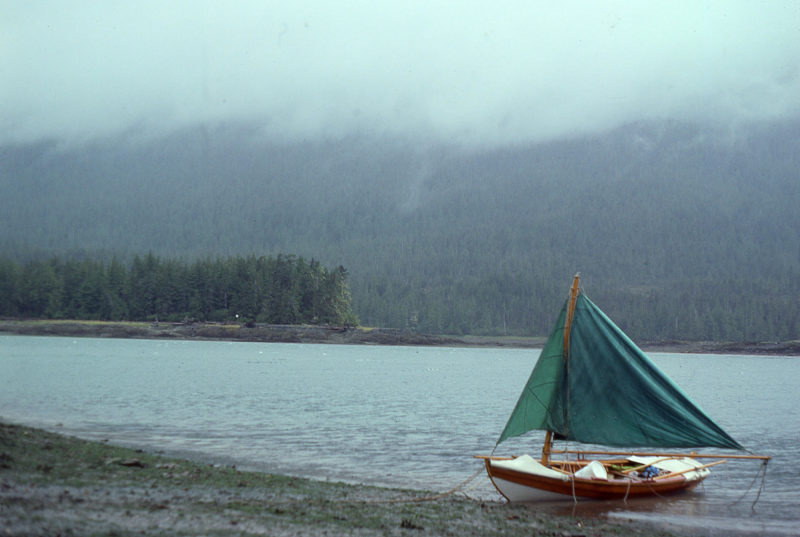
After the crossing, GAMINE rests in Kelp Passage. With the sprit removed, the main is much smaller, but I’d have been better off running under bare poles, better still waiting for a better day.
The wind, weakened by its collision with the land, eased and GAMINE slowed. A quarter mile into the narrow gap I’d chanced upon—Kelp Passage, separating Porcher Island from Lewis Island—I turned to starboard into a 100-yard-wide cove. The sails and sheets went slack, and the dory coasted to a stop with the bow nudged against the shore. I stepped over the side and felt the cool, comforting squeeze of the mud around my boots.
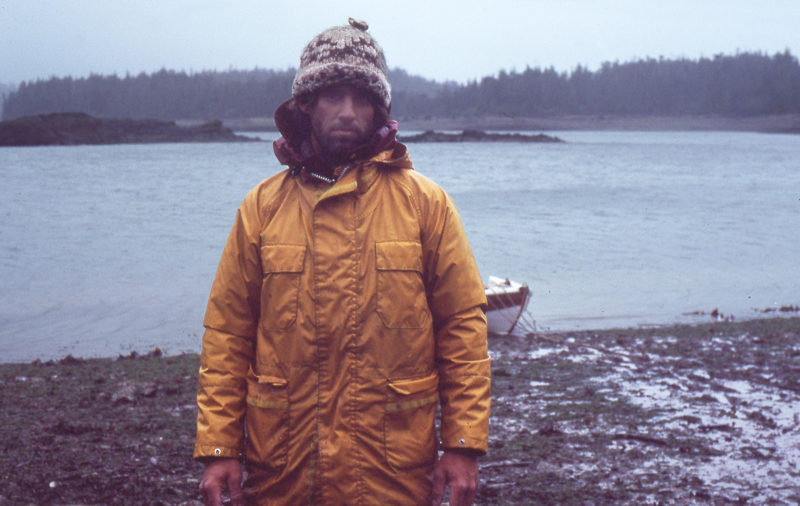
I made it ashore in one piece but I was deeply shaken by the crossing from Gibson Island. The decision had been made for me; it was time to bring an end to this voyage and go home.
It was only 10:00 a.m., but I was certainly done for the day. The tide was nearing low slack. I left GAMINE where I’d come ashore and let the water slip out from under her. I dropped the rig, set up the boom tent, and heated a bowl of soup for an early lunch.
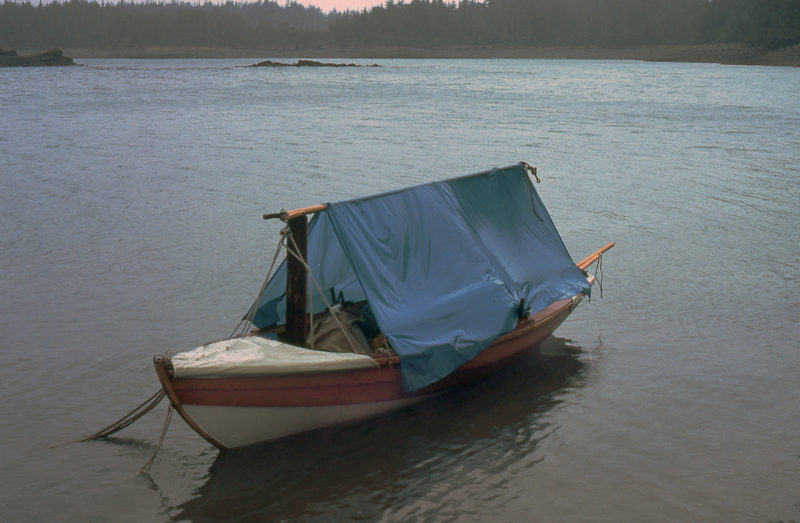
My accommodations were spartan at best. I slept on the floorboards with my legs tucked alongside the centerboard trunk. To roll over, I had to pull my legs back, lift them over the thwart, and tuck them on the other side of the trunk. All that required waking up. Here in Kelp Passage, the tide is rising as my last night of the voyage approaches.
I spent most of the day aboard the boat, and once she was afloat, she kited back and forth at the end of the anchor rode. The wind was blowing unabated and howling in the trees surrounding the cove. Tide would rise more than 20′ from the low and would lift me out of the lee, so in the afternoon I rowed deeper into the passage and anchored in larger cove better sheltered from the wind.
I spent the rest of the day aboard the boat tidying up, eating, and resting. At dusk, as I was settling in for night, the falling tide set GAMINE gently on a muddy plain. Grounded, I’d sleep well and be afloat in the morning. I awoke just before midnight and looked out from under the boom tent. The gibbous moon, just four days past full, was illuminating the landscape; as far as I could see, there was no water anywhere in the passage.
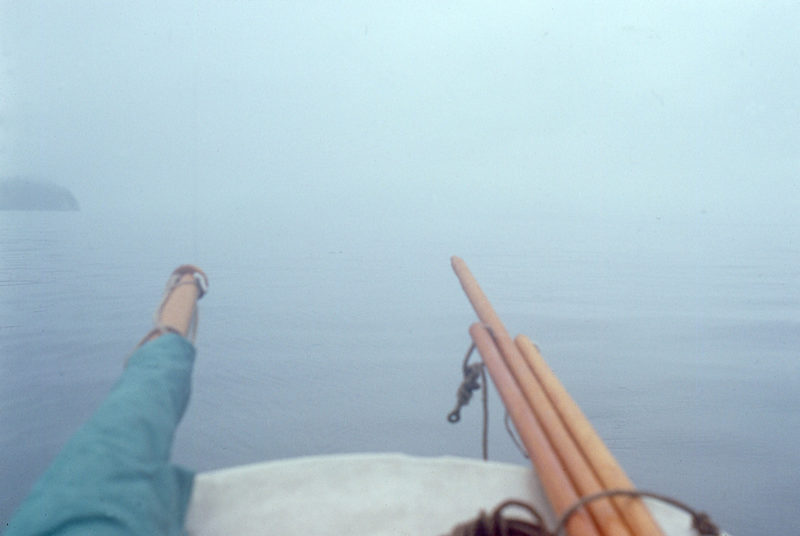
To the south, the islands were being swallowed up by fog.
When I woke, GAMINE was afloat and the air was still. I packed up and left in a hurry, not wanting to waste good rowing weather. As I headed north, Kelp Passage broadened and became Chismore Passage. Clear of Chismore’s north end, I set a course across Arthur Passage toward Smith Island, 4 miles away to the northeast. To the south, islands were turning pale and then disappearing as they were being enveloped by an approaching fog bank.
The horizon had disappeared behind a chalky haze, and when two pilot whales rose in tandem, their hooked black dorsals were the only marks on a dimensionless amalgam of sea and sky.
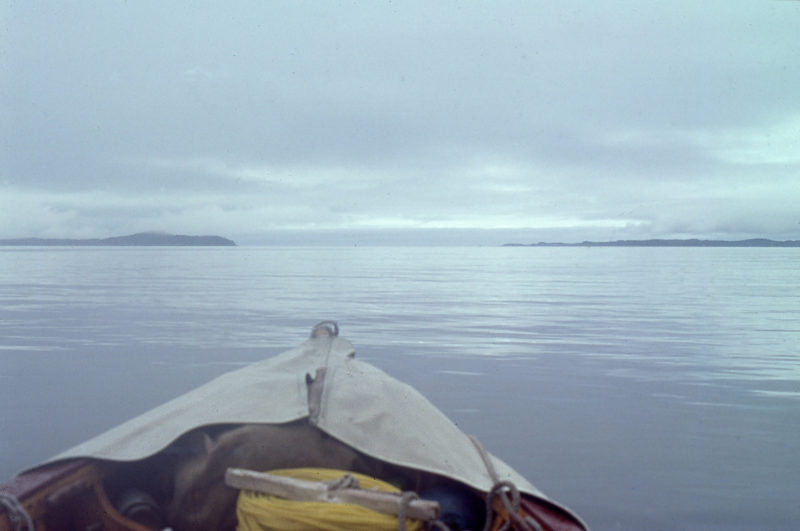
GAMINE’s bow is aimed at Alaska, hidden in distant fog bank beyond the gap between the northernmost islands of British Columbia. It would remain out of reach.
I rowed hard as fog wrapped around the south end of Smith Island and veered north by degrees, completing the crossing just before losing sight of the island. I crossed to Lelu Island and found my way along its western shore blocked by a sandbar that had been uncovered by the low tide. The bar stretched all the way to Kitson Island, a full mile to the southwest.
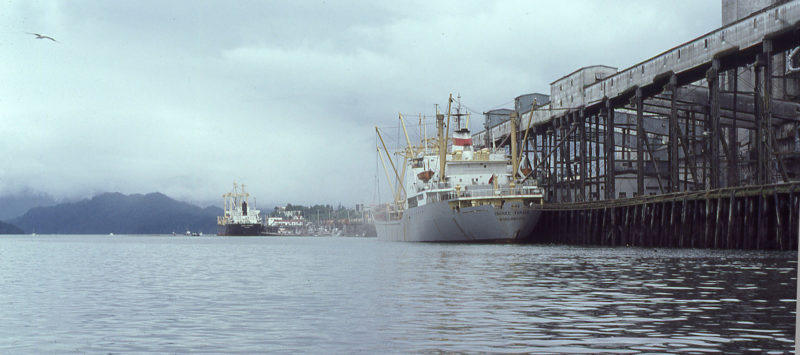
Prince Rupert is a busy port and I didn’t know where I’d be able to come ashore. In the midst of all of the oversized commercial facilities, I found the Prince Rupert Rowing and Yacht Club. I was welcomed there and allowed to stay for several days while I made arrangements to take GAMINE back home.
After I rounded Kitson, the fog cleared, and to the north I could see the last of the islands on the British Columbia coast stretched out along the horizon; beyond them lay Alaska. As close as I’d come to it, the weather had made it clear that it was time to stop. As I made my way to the port city of Prince Rupert, the sun broke through a ceiling of clouds the color of tarnished silver. I rowed the last 7 miles bathed in sunlight.
Epilogue
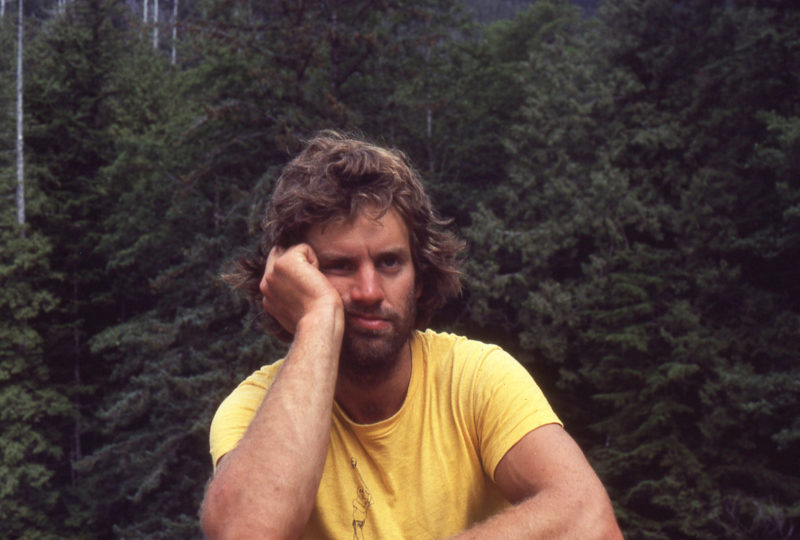
Wanting it to be over
I took this picture of myself during a break from rowing Grenville Channel. Thinking that I’d look back on this experience in a few years with fondness, I wanted to have something to remind me how difficult it was and how often I was either wet, cold, tired, hungry or all four.
After 31 days, having travelled over 700 miles aboard GAMINE and almost 100 miles with RAINBOW, I was relieved to be in Prince Rupert and on my way home. I hitched a ride back to Seattle; GAMINE came along on top of the van. I never did another cruise aboard her and eventually sold her.
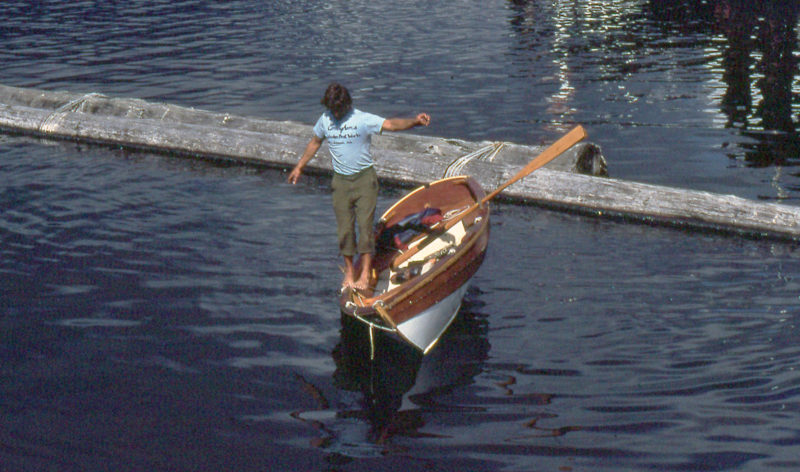
I spent several days in Prince Rupert waiting for a ride back home to Seattle. No longer burdened by cruising, GAMINE and I both felt a bit lighter.
For a while I gave up on cruising, but when I saw maps of other inland waterways, the same stirring that had compelled me to build and sail GAMINE came over me. Between 1982 and 1987 I built three more boats for three more inland cruises. The first of those cruises was longer—2,500 miles over the course of 4 ½ months— and the one that followed was more challenging—2,400 miles in 2-1/2 months in the middle of winter. Eventually I returned to the Inside Passage and made it to Alaska.
During all those cruises I never came up with a good answer to the question—”Why?”— posed to me by young Bergie while I was aboard GAMINE in Nanaimo. I had no goal, at least not one that I could find within me, let alone express. To be sure, I had many memorable experiences, but they took on meaning only in retrospect and even the sum of them couldn’t account for whatever it was the kept me coming back to travel by boat. If I had known what I was looking for, I might have taken the quickest path to it and, having achieved it, set out for something else. When I was looking at maps of the British Columbia coast I must have seen the convoluted course of the Inside Passage not merely as a waterway leading north, but as a path I could follow to explore what I was capable of and perhaps discover something about myself.![]()
Christopher Cunningham is the editor of Small Boats Monthly.
If you have an interesting story to tell about your adventures with a small boat, please email us a brief outline and a few photos.
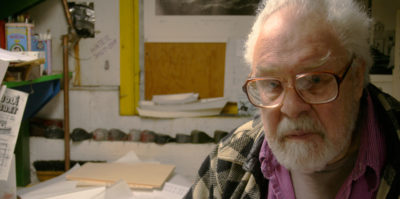
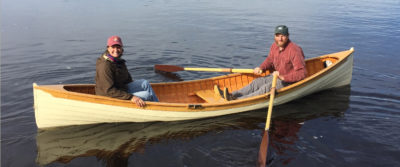
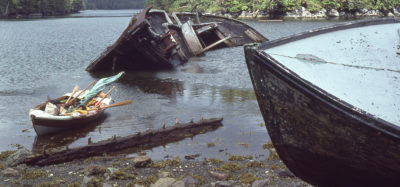
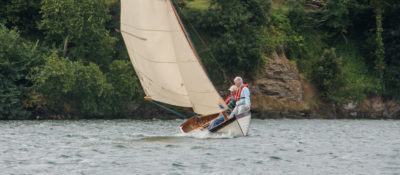
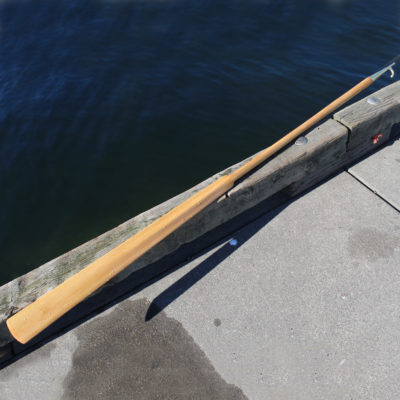
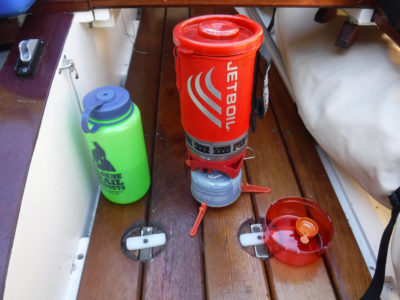
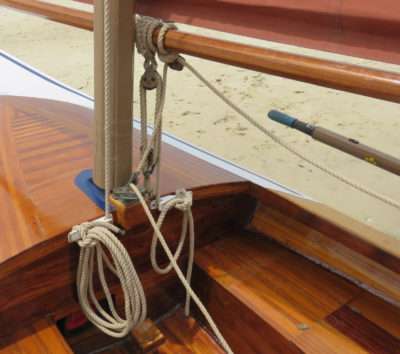
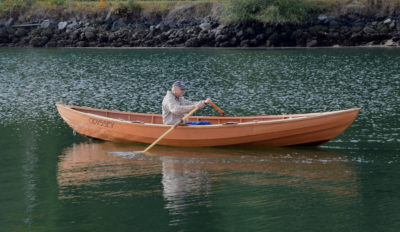
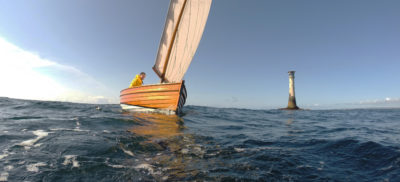
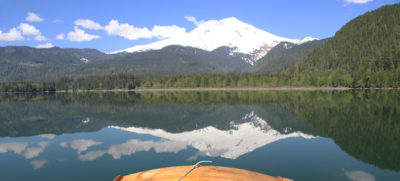
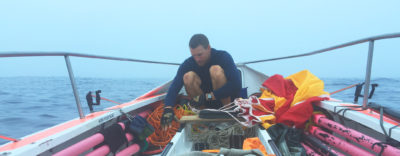
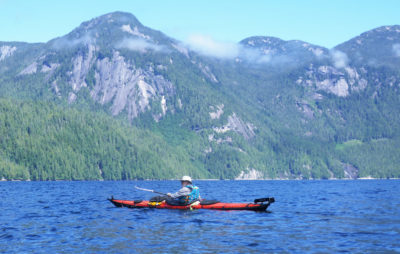
Great story Chris!
So many echoes with my trip south over the same waters last year. So much has changed. Klemtu now has a real road. Butedale has mostly fallen apart, with just a seasonal caretaker, although the present owner has big development plans. Less wild salmon and now fish farms in many places.
On the other hand, many of my experiences were similar to yours. I was blown into Butedale on a big wind, instead of out of it. Long, long days rowing in Grenville Channel and alongside Princess Royal. The bugs are still there in Lowe Inlet. I too was blown into Kelp Passage, except from the north, in strong winds and heavy rain, and was grateful to find shelter there behind Lewis Island. Rowing in the rain in Mathieson Channel. Unlooked-for hospitality from other boaters.
But, wet, tired, cold, sore and hungry, like you, it was a time to be intensely alive and I wouldn’t have missed it for the world.
I have just read your own account of sailing the Inside Passage in
British Columbia. What an awesome passage to undertake
single-handed! Great stuff.
Chris:
Many thanks for your yarn. Good on you.
The virtue of a great sport, to me, is that it gets you to the right place at the right time.
Hiking comes to mind as tough, demanding, and tiring when the trail takes you through challenging topography. Cross country and downhill skiing requires even more muscle tone, plus grace and rhythm. Bicyling backroads and trails is a celebration of physics expanding human strength but is unforgiving of any lapse of focus. Canoeing beyond roads and power lines offers the near-magical slide and flow of the light craft under you, along with the near-heartbreaking portages across muskeg bogs on shaky floating log-pairs (and, damn them, the clouds of bugs). Sailing is the very best.
Now and then, not often, your effort brings you to an apotheosis of weather, environment, light, and awareness: frozen Lake Tahoe in supernaturally sharp sunlight from the highest lift at Squaw Valley; hiking up Mount Tam and resting in a swale under the wind beside a triple waterfall; a long procession of Gold Rush eucalyptus making a leafy tunnel of a deserted road, fragrant bark strips rattling under your bicycle tires.
But sailing has burned into me particular, extraordinary legs of many voyages, with wind driving a boat you know intimately and waves lifting it like an offering to the blue, blue sky. Those scintillating legs – ten minutes or an hour – make all the disc sanding and varnishing and expense and wet butts worth the trouble.
The tale of your voyage speaks to these moments. Like a good tale, it doesn’t diminish the discomfort, boredom, muscle spasms and bouts of fear you invested to distill the moments from an entire season.
Not everyone can make a trip like yours. Nor should they. Sailing solo makes a dandy story but, honestly, most of us are not emotionally set up to endure solitary living for long. Self-reliance is admirable, and self-discovery is precious, but the psychology of facing both hardships and joy without companions is tricky business. I’ve sailed solo in little boats and discovered that the immensity of the water, the frivolous vagaries of weather, the immense and ungovernable forces applied to your solitary situation are humbling. They can be borne, but just how long differs from one sailor to another. For an old depressive like me (most writers and artists are vulnerable to depression), solo voyages are contraindicated. Some dark and powerful dreads can overhaul you when your little boat is only a speck on a vast stretch of hostile water.
This brings up another important point. When I worked at National Geographic, the expeditions editor, Bill Graves, had a quote from explorer Vilhjalmur Stefansson framed on his office wall: “Adventure is a sign of incompetence.” I haven’t called your voyage an adventure because you’re a damn careful sailor who takes weather and equipment frailty seriously, and because you knew when to quit. We hear too damn much about extreme sports and daredevil exploits. Stunts aren’t sport, and they surely don’t fall within the careful boundaries of good seamanship set out by my favorite character in the Coastal Pilot books, the Prudent Mariner. That skipper doesn’t have adventures; he or she gets to a destination without fuss and flurry, in a well-planned manner that could never be called showy.
Small boats are so personal and so much fun that wild hare sailors (bunnies don’t belong on boats) are tempted to take wild chances. And that’s another dangerous thing about solo sailing: there’s no one to tell you “Sit down and shut up and be sensible. Let’s have a good time, not break any bones, and get where we’re going. No adventure.”
Grand yarn, lovely scenery, lovely little boat.
Adkins
Just read the second half of your Inside Passage trip. That stretch from Gibson Island to Kelp Passage was quite harrowing to read. It’s a credit to your seamanship and one tough little boat that you made it in one piece.
This just proves…There is nothing…ABSOLUTELY NOTHING…half so much worth doing as simply messing about in boats.
Jim and Pat
Dixie County, Florida
Thank you for writing about it all.